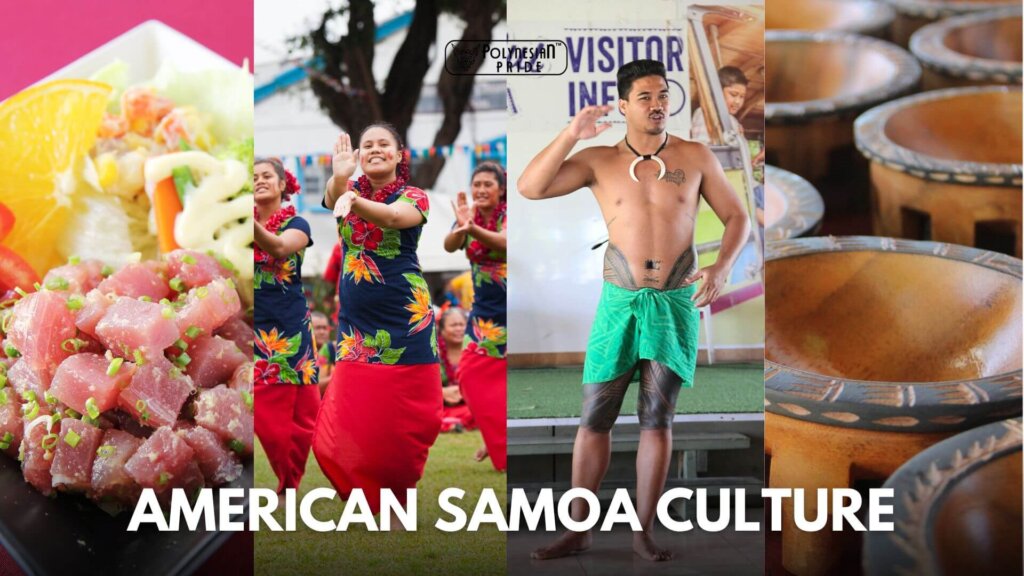History of American Samoa: Amazing Journey Through Time

INTRODUCTION
American Samoa, a U.S. territory in the South Pacific Ocean, boasts a rich and complex history spanning centuries. From its Polynesian roots to its current status as an unincorporated territory of the United States, American Samoa’s journey through time is a fascinating tale of cultural resilience, political evolution, and the interplay between tradition and modernity. Let’s embark on a journey to uncover the history of American Samoa.
I. History of American Samoa: Key Events
Ancient Polynesian Settlement
The history of American Samoa begins with the arrival of Polynesian voyagers, who settled the islands over 3,000 years ago. These early settlers brought with them a rich cultural heritage, including sophisticated navigation techniques, agricultural practices, and social structures that would form the foundation of Samoan society.
- The earliest archaeological evidence dates back to around 1000 BCE
- Settlers likely arrived from other Polynesian islands, such as Tonga or Fiji
- Advanced canoe-building and navigation skills enabled long-distance ocean voyages

European Contact and Colonization
The first European contact with Samoa occurred in the 18th century, marking the beginning of a new era in the islands’ history. Dutch explorer Jacob Roggeveen was the first to sight the islands in 1722, followed by French explorer Louis-Antoine de Bougainville in 1768.
- 1722: Jacob Roggeveen sights the Samoan islands
- 1768: Louis-Antoine de Bougainville names the islands ‘Navigator Islands’
- 1830: Arrival of Christian missionaries, beginning the process of religious conversion
American Influence and Annexation
In the late 19th century, increasing American interest in Samoa, driven by strategic and commercial considerations, culminated in the division of the Samoan archipelago between Germany and the United States in 1899.
- 1878: The United States established a coaling station in Pago Pago Harbor
- 1899: The Tripartite Convention divided Samoa between Germany and the United States
- 1900: Eastern Samoa becomes a U.S. territory, now known as American Samoa

II. American Samoan Role in World War II

World War II’s Impact on History American Samoa
During World War II, American Samoa played a strategic role in the Pacific theatre, serving as a vital supply and refueling point for U.S. forces. The war brought significant changes to the islands, including increased military presence and economic development.
- 1941-1945: American Samoa served as a strategic military base
- The influx of U.S. military personnel and infrastructure development
- The economic boost from wartime activities and construction projects
Post-War Development and Modernization
The years following World War II saw significant changes in the history of American Samoa as the territory underwent a process of modernization and economic development. Improvements in infrastructure, education, and healthcare marked this period.
- 1960s: Construction of the Pago Pago International Airport
- Expansion of the public education system
- Development of the tuna canning industry as a major economic driver
III. From Polynesian Roots to American Territory
Traditional American Samoan Society
Before European contact, American Samoan society was organized around a complex system of chieftainship and extended family units called ‘aiga. This traditional structure played a crucial role in governing daily life, resolving conflicts, and maintaining social order.
- Matai system: Hierarchical leadership structure based on family titles
- Fa’asamoa: The Samoan way of life emphasizing respect, service, and community
- Traditional crafts: Tapa cloth making, woodcarving, and tattooing were important cultural practices

Transition to U.S. Territory
The formal establishment of American Samoa as a U.S. territory in 1900 marked a significant turning point in the islands’ history. This new political arrangement brought both opportunities and challenges for the Samoan people.
- U.S. Navy administration (1900-1951)
- Department of the Interior oversight (1951-present)
- Development of a local government structure
Naval Administration (1900-1951)
For the first half of the 20th century, American Samoa was administered by the U.S. Navy. This period saw the implementation of American-style governance and infrastructure development, but also raised questions about cultural preservation and local autonomy.
- Establishment of a healthcare system and public schools
- Implementation of U.S. legal and administrative structures
- Tensions between the naval authority and traditional Samoan leadership
Transition to Civilian Rule
The 1951 transfer of administrative responsibility from the Navy to the Department of the Interior marked a significant shift in the governance of American Samoa. This transition opened the door for greater civilian involvement in local affairs and set the stage for future political developments.
- Appointment of civilian governors
- Increased focus on economic development and infrastructure
- Gradual expansion of local political participation
Impact of Western Influence
The arrival of Western powers brought significant changes to American Samoa’s history, including new religions, technologies, and economic systems. This period of transition was marked by both conflict and adaptation as Samoans navigated the challenges of modernization while striving to maintain their cultural identity.
- The introduction of Christianity led to changes in religious practices and social norms.
- Western trade brought new goods and economic opportunities
- The colonial administration challenged traditional power structures

IV. The Influence of Polynesian and American on American Samoa History
Preservation of Fa’asamoa
Despite centuries of foreign influence, American Samoa continues to preserve its culture, which is deeply rooted in Polynesian traditions. Particularly through the preservation of fa’asamoa, or the Samoan way of life, this cultural foundation continues to influence social interactions, governance, and daily life in the territory.
- Importance of extended family (‘aiga) in social organization
- Continued relevance of the matai system in local governance
- Preservation of traditional arts, crafts, and ceremonies
Language and Education
The interplay between the Samoan and English languages reflects the dual cultural influences present in American Samoa. The education system has played a crucial role in both preserving American Samoan culture and preparing students for participation in the global economy.
- Bilingual education programs in public schools
- Efforts to preserve and promote the American Samoan language
- Integration of Samoan cultural studies into the curriculum
Religious Influences
Today, American Samoa’s religious landscape reflects a blend of Christian denominations and traditional Samoan spiritual beliefs.
- The predominance of Christian churches in community life
- Incorporation of American Samoan cultural elements into Christian practices
- Ongoing role of traditional spiritual beliefs in some aspects of society

V. Preserving the History of American Samoa
Cultural Preservation Efforts
Recognizing the importance of preserving their unique heritage, American Samoans have undertaken various initiatives to protect and promote their cultural legacy. These efforts span multiple domains, from language preservation to the protection of historic sites.
- Establishment of the American Samoa Historic Preservation Office
- Development of cultural education programs in schools and communities
- Efforts to document and preserve traditional knowledge and practices
Balancing Tradition and Modernity
The challenge of maintaining cultural identity in the face of globalization and modernization is a central theme in contemporary American Samoan society. This balancing act is evident in various aspects of daily life, from fashion to technology adoption.
- Adaptation of traditional clothing styles for modern contexts
- Integration of technology while preserving face-to-face communication practices
- Evolving role of conventional healers alongside modern healthcare
Diaspora and Cultural Exchange
The migration of American Samoans to the United States mainland and other countries has created a vibrant diaspora community. This global network of American Samoans plays a crucial role in both preserving and evolving Samoan culture.
- Establishment of Samoan cultural organizations in diaspora communities
- Cultural exchanges and remittances between American Samoa and overseas communities
- Impact of return migration on local culture and economy

VI. Must-Visit Historical Sites in American Samoa
Natural and Cultural Heritage Sites
American Samoa is home to numerous sites of historical and cultural significance. The protection and management of these sites play a crucial role in preserving the territory’s heritage for future generations.
- National Park of American Samoa: Preserving natural and cultural resources
- Fagatele Bay National Marine Sanctuary: Protecting marine ecosystems and traditional fishing practices
- Historic villages and archaeological sites: Tangible links to Samoa’s ancient past
Museums and Cultural Institutions
Museums and cultural institutions play a vital role in preserving and interpreting the history of American Samoa. These organizations serve as repositories of cultural knowledge and provide opportunities for education and cultural exchange.
- Jean P. Haydon Museum: Showcasing Samoan artifacts and historical exhibits
- Tauese P.F. Sunia Ocean Center: Educating visitors about marine conservation and Samoan maritime heritage
- Community cultural centers: Promoting traditional arts and crafts

CONCLUSION
The history of American Samoa is a rich tapestry woven from ancient Polynesian traditions, European exploration, and American influence. Despite foreign impacts, the Samoan people have maintained a strong cultural identity, blending traditional practices with modern advancements. The preservation of their heritage, seen in practices like tatau (tattooing), traditional dance, and oral storytelling, highlights their resilience. The American Samoan diaspora further enriches this narrative, contributing to a global exchange that strengthens cultural ties. Ultimately, the history of American Samoa is a testament to the enduring strength and adaptability of its people.
FAQs
What are the origins of American Samoa’s first inhabitants?
The first inhabitants of American Samoa were Polynesians who settled around 1000 BCE. They established a rich culture and society that thrived on the islands for centuries before European contact. The history of American Samoa is deeply rooted in these early Polynesian settlers and their enduring cultural legacy.
Why did Samoa and American Samoa split?
Samoa and American Samoa split due to the 1899 Tripartite Convention, which divided the islands between Germany and the U.S. The eastern islands became American Samoa under U.S. control, while the western islands became German Samoa (now Samoa). This division significantly shaped American Samoa’s history.
Why does the U.S. own American Samoa?
The U.S. owns American Samoa due to early 20th-century treaties and deeds of cession signed by local chiefs, making it a U.S. territory. This arrangement, part of broader geopolitical strategies, established American Samoa as a strategic naval and military base in the Pacific. American Samoa’s history includes its strategic importance and the impact of U.S. governance.
What’s the difference between American Samoa and Samoa?
American Samoa and Samoa differ in their political status, governance, and relationship with other countries. American Samoa is an unincorporated territory of the United States, meaning it is under U.S. sovereignty but has its own local government. Samoa, on the other hand, is an independent nation. For more details, check out Discover 13 Amazing Difference Between Samoa and American Samoa.

I am Leilani Miller – I research focusing on Vanuatu – volcanic landscapes, blue holes, coral reefs & rainforests. I have over five years of experience researching and sharing insights on tourism and environmental activism. Explore and experience without limits through my latest article.
Contact information:
Email: [email protected]
Tel: +1 (808) 555-1528






